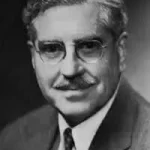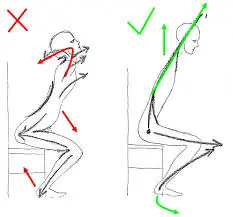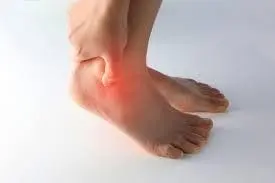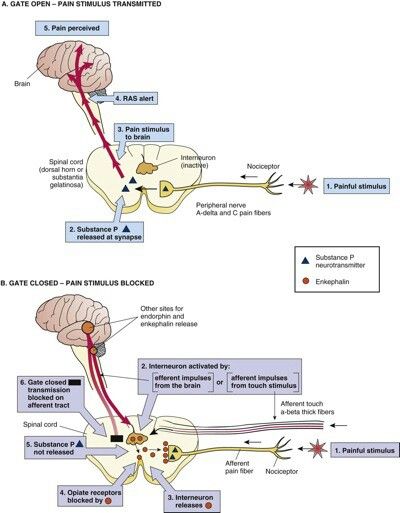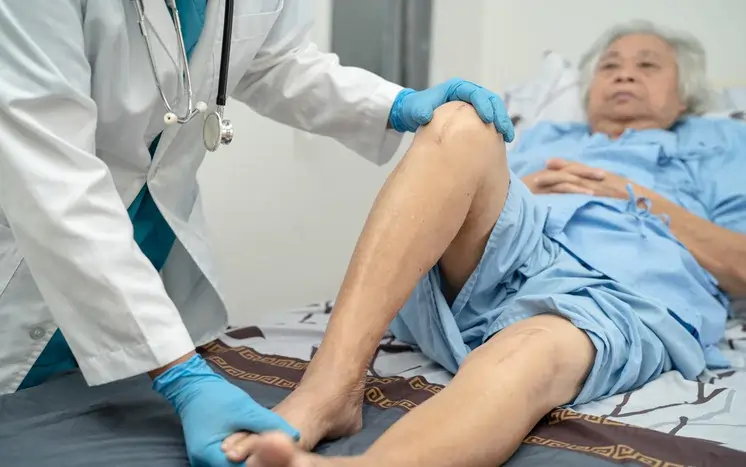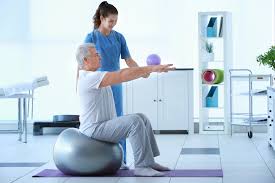Temple Fay Technique: A Progressive Pattern Movement
What is Temple Fay Technique?
The Temple Fay Technique is a neurodevelopmental approach that uses progressive pattern movements to facilitate brain organization and motor development. It is based on the idea that reenacting early movement patterns can help individuals with neurological impairments improve coordination and function.
American neurosurgeon and neurologist Temple Fay is most recognized for his research on hypothermia, or lowering body temperature, and his views on how children gain their motor abilities.
In physical therapy, people with motor control issues especially children with cerebral palsy are treated with the neurodevelopmental Temple Fay technique, also referred to as the progressive pattern movements technique. Early in the 20th century, neurosurgeon and physiologist Dr. Temple Fay created it.
Principals
Developmental Sequence: The method is predicated on the concept that motor skills advance in a particular order, starting with rolling and crawling and ending with walking and running. It seeks to assist the person in navigating these typical phases of growth.
Reflex Integration: Normal movement patterns may be disrupted by abnormal reflexes. Inhibiting these reflexes and promoting the growth of more sophisticated postural reactions are the goals of the Temple Fay method.
Sensory Stimulation: To stimulate or inhibit motor responses, a variety of sensory stimuli are employed, including pressure, movement, and touch.
Functional Activities: Improving the person’s capacity to carry out functional tasks including eating, dressing, and walking is the ultimate objective.
The exercises and activities used in the Temple Fay approach are intended to:
- Stop atypical reflex activation
- Encourage postural responses
- Lead the person through the typical motor development sequences; encourage voluntary control of typical responses; and support the usual integration of both sides of the body
The following are some essential elements of the usual application of the Temple Fay technique:
Evaluation
Comprehensive evaluation: The person’s motor skills, reflexes, posture, and functional abilities will all be carefully evaluated by the therapist.
Developmental history: They will compile details on the person’s past, including any delays or difficulties faced as well as any developmental milestones reached.
Particular requirements: The therapist will determine the patient’s particular requirements and therapeutic objectives.
Plan of Treatment
Personalized approach: The therapist will create a customized treatment plan with targeted exercises and activities based on the evaluation.
Developmental sequence: From rolling to crawling, sitting, standing, and walking, the activities will be made to lead the person through the typical progression of motor development.
Integration of reflexes: The therapist will employ strategies to suppress aberrant reflexes and promote the growth of more sophisticated postural responses.
Sensory stimulation: To either stimulate or inhibit motor responses, a variety of sensory stimuli will be employed, including touch, pressure, and movement.
The Temple Fay method places an extreme value on helping people progress through the normal motor development process. The movement patterns involved are broken out as follows:
Integration of Reflex:
Primitive reflex inhibition: The method seeks to lessen the impact of reflexes that exist during infancy but usually go away as the nervous system develops.
These reflexes, like the Asymmetrical Tonic Neck Reflex (ATNR) or the Moro reflex (startle reaction), may prevent the development of more coordinated motions.
Developmental Sequence
The Temple Fay approach moves through the following phases in a particular developmental sequence:
- Rolling
- Homolateral Stage
- Cross-lateral Stage
- Crawling
- Elephants walk on hands and feet
- Walking
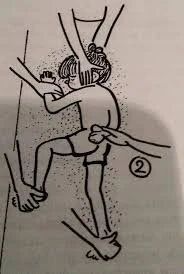
Stage:1 Rolling
This is the fundamental motion that encourages body awareness, coordination, and trunk rotation.
Techniques: To encourage the patient to start and regulate the movement, the therapist may help them roll from back to stomach and vice versa.
Benefits: Rolling increases body awareness, strengthens the core muscles, and boosts upper- and lower-body coordination.
Stage:2 Homolateral Stage
Strength and coordination are further developed by creeping, which is crawling on hands and knees.
Methods: The therapist can help the patient stay in a quadrupedal posture and urge them to alternate between forward and backward motions with their arms and legs.
Benefits include increased balance, better upper- and lower-body coordination, and strengthened core muscles.
Homolateral Stage: These are actions that are performed on the same side of the body, as stepping with the right leg and reaching with the right arm.
Lying prone with head turned to one side. The hand is open, the arm is in abduction-external rotation on the face side, the elbow is semi flexed, and the thumb is pointed toward the mouth.
The face side of the leg is in abduction, and the knee flexes against the foot’s dorsiflexion. The child’s hand opens at his side or the lumbar area of his back, his arm is internally rotated, and his leg is extended on the occiput side.
The head can be moved from side to side, the opposite arm and leg can be flexed up to the position near the face, and the face, arm, and leg can be swept down to the extended position.
Stage:3 Cross-lateral Stage
Include actions on the opposing sides of the body, as walking with the left leg and reaching with the right arm.
Walking and other sophisticated motor abilities need cross-lateral motions.
Prone lying
Like in stage 2, the head is pointed to the side and the arm is placed on the face. On the face side, however, the leg was enlarged. The other leg was flexed on the side of the occiput.
Stage:4 Crawling
Crawling increases balance, strengthens the core muscles, and boosts upper- and lower-body coordination.
Techniques: Using a tunnel to crawl through or positioning toys or other items just out of reach are two ways to promote crawling.
Benefits: Crawling improves posture and balance, increases spatial awareness, and strengthens and coordinates the arms and legs.
Stage:5 Elephants walk on hands and feet
It does include quadrupedal motions like crawling and creeping, which are mimicked by animal developmental processes. While there are some parallels between these motions and those of elephants, there are also significant differences.
Quadrupedal Movement: Both need moving with all four limbs.
Weight Bearing: Both involve using the hands and feet to support weight.
Coordination: Both require synchronizing the limbs’ motions.
Strength: Arms, legs, and core muscles must be strong for both.
Variations:
Elephants have a distinctive gait pattern in which they move their legs in a certain order to stay balanced and stable. Although it incorporates quadrupedal motions, the Temple Fay approach does not always aim to replicate an elephant’s precise walking pattern.
Weight Distribution: Because of their size and morphology, elephants distribute their weight differently than people do. The Temple Fay method concentrates on human balance and weight shifting, which may differ slightly from elephant balance.
Stage:6 Walking
The “sailor’s walk” is a component of the Temple Fay approach, particularly at the stage of walking patterns. It’s an innovative way to enhance coordination and make walking easier.
The sailor’s walk is a particular pattern of walking in which the person’s body moves similarly to how sailors walk on a ship, usually with a broader stance and a swaying motion. This pattern aids in:
Increase stability and balance by adopting a wider posture, which offers a larger base of support.
Improve coordination: The swaying action requires coordinating trunk, arm, and leg motions.
Encourage weight shifting: One of the most important walking techniques is the sailor’s walk, which promotes weight shifting from one leg to the other.
Technique
The person begins by placing their feet a little wider than shoulder-width apart.
Movement: They swing the opposing arm forth and backward after shifting their weight to one leg.
Stepping: They move their weight to that leg and swing the opposing arm forward after taking a stride forward with the weight-bearing leg.
With every step, they switch between their arms and legs as they continue this cycle.
The Temple Fay method uses the sailor’s walk to:
Encourage walking: This can be a useful strategy for teaching or enhancing walking abilities, particularly for people who struggle with balance or coordination.
Strengthen muscles: The sailor’s walk exercises work the arms, legs, and core, among other muscles.
Enhance motor control: The sailor’s walk’s synchronized motions improve planning and motor control.
Temple Fay Technique Video
FAQs
The Temple Fay Technique: What is it?
Physical therapy uses this neurodevelopmental method to correct motor control issues, especially in kids with cerebral palsy.
It places a strong emphasis on helping people go through the normal motor development sequence, which includes rolling over to walking.
Which conditions does it treat?
used mostly to treat cerebral palsy, but it can also be used to treat other neurological disorders or developmental delays that impact physical abilities.
Is it possible to perform Temple Fay exercises at home?
It’s important to have direction and training from the therapist, even though certain exercises could be appropriate for at-home practice.
Are the Doman Method and the Temple Fay Technique similar?
Although both strategies emphasize early developmental patterns, they are different approaches. Temple Fay focuses only on motor development, whereas the Doman Method takes a more comprehensive neurodevelopmental approach.
References
- Contributors to Wikimedia projects. (2024, December 29). Temple Fay. Simple English Wikipedia, the Free Encyclopedia. https://simple.wikipedia.org/wiki/Temple_Fay
- Temple Fay technique: a progressive pattern movement. Samarpan Physiotherapy Clinic. https://samarpanphysioclinic.com/temple-fay-technique/
- Jose, S. (2020, August 15). Temple fays and phelps approach in neurophysiotherapy and cerebral palsy [Slide show]. SlideShare. https://www.slideshare.net/slideshow/temple-fays-and-phelps-approach-in-neurophysiotherapy-and-cerebral-palsy-237941522/237941522

